Human ancestors caused the extinction of animals 4 million years ago
Modern human activities have caused enormous damage to the Earth, ecological environment, and many animals have become extinct because of this, some typical species can be mentioned such as Tasmanian wolf , passenger pigeon, chin Dodo, Chinese spoon sturgeon .
We have even caused the extinction of animals since the ice age tens of thousands of years ago, but a new study published in the journal Ecology Express suggests that our ancient ancestors had caused the extinction of animals from 4 million years ago.
The paper, "Brain expansion in early hominins predicts carnivore extinctions in East Africa" - "Brain expansion in early apes predicted the extinction of predators in East Africa", was published by a International scientific group from UK, Switzerland and Sweden.
The comparison of data proves that the crisis of human biodiversity today is not a new phenomenon and our distant ancestors began to accelerate this process millions of years ago. .

We have caused much damage to nature.
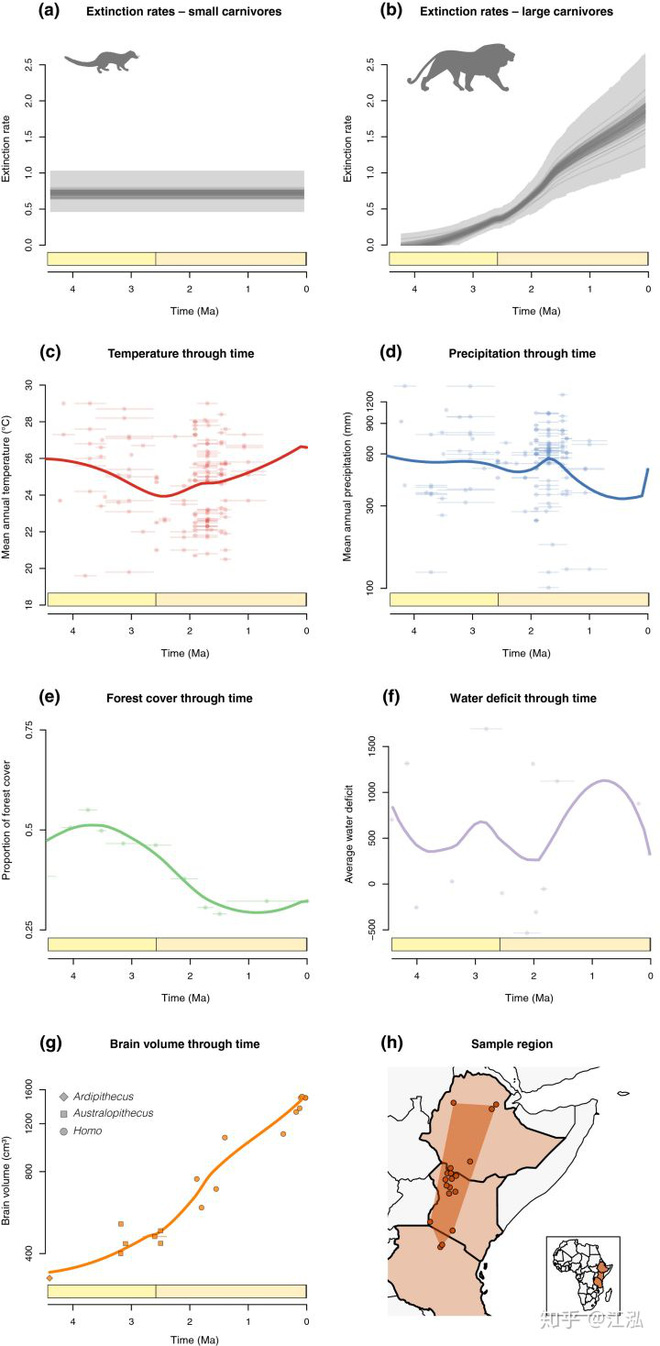
Data analysis chart in the research paper.
Before the end of the extinction of the human-induced Pleistocene, paleontologists often assumed that the extinction of animals was due to climate change. But when looking at climate change in Africa, the researchers found that in millions of years, climate change in Africa was much smaller than other continents, but the species extinction still appear. It seems that climate is not the main cause of animal extinction in Africa.
When the scientists turned their research to East Africa, they found that most ancient East African predators were almost extinct and most likely their extinction. concerning the fierce competition with our ancestors in the battle for the forefront of the food chain.
East Africa has long been known as the center of the evolution of human ancestors. Early humans from Orrorin tugenensis to Ardipithecus (ground ape), Australopithecus (southern genus), our ancestors moved their habitat from the jungle to the meadow, then stood upright and moved on their feet following and reaching the shape almost the same as we are today.
Paleontologists have discovered that East Africa has experienced many extinctions since the earliest days of the distant human ancestor (5 to 4 million years ago).
After collating and analyzing fossils, paleontologists have even found that during this period, the number of large predators has decreased significantly. The starting point for this decline process was 4 million years ago.
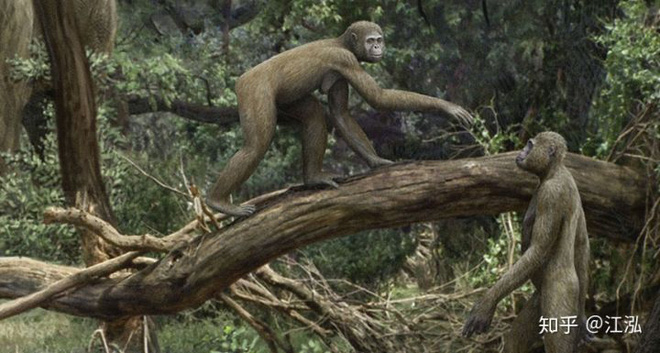
Ardipithecus (gibbon land).
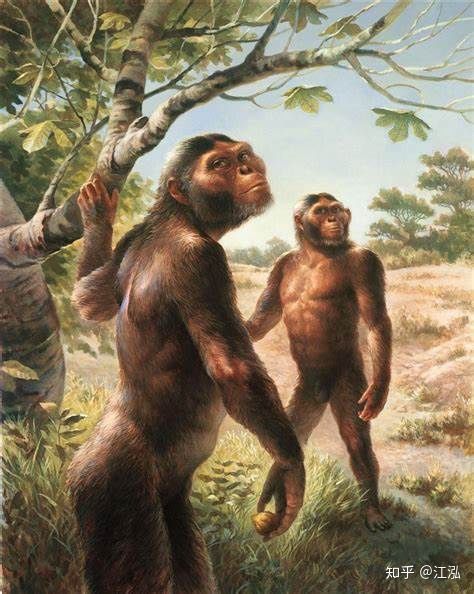
Australopithecus (southern hominid).
Paleontologists believe that the decline in large numbers of predators in East Africa stems from the cause of "parasitic parasites" - (Kleptoparasitism), the dominant species that can rob food from subordinate species.
This phenomenon can be easily seen in the wild natural environment today as the lion or hyena will go to steal the spoils of cheetahs, seals will catch small fish caught by terns. .

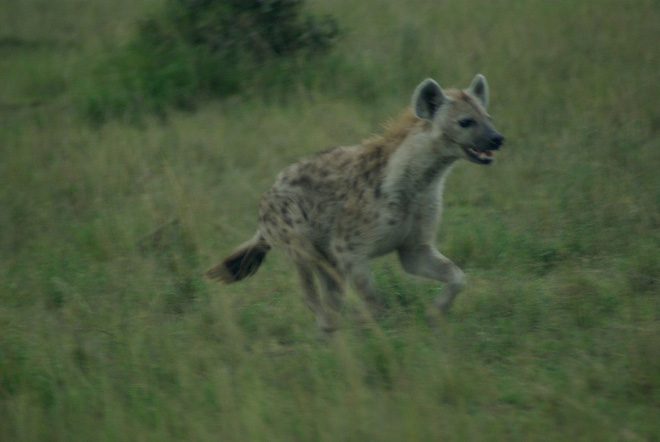
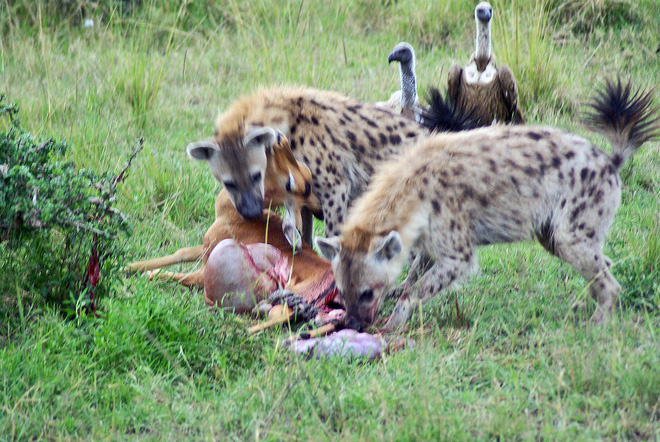
A cheetah has just killed an Impala antelope and eaten a portion of its prey, creating a target for parasite to steal. Three minutes later: one spotted hyena then the other run towards the cheetah that is feeding. 38 seconds later: The cheetah fled without resistance, the vulture will also join the robbery parasite: when the hyenas move a piece of carcass, the vulture will take the leftover piece from the ground.

Eagles steal food from gulls.
In prehistoric East Africa, human ancestors (Southern apes, etc.) were able to steal food from other carnivores right after they had just finished their prey. This causes predators to starve to death as they do not have enough food. Over time, the number of human ancestors increased and the robbery took place more and more, which led to the decline or even extinction of all predator species.
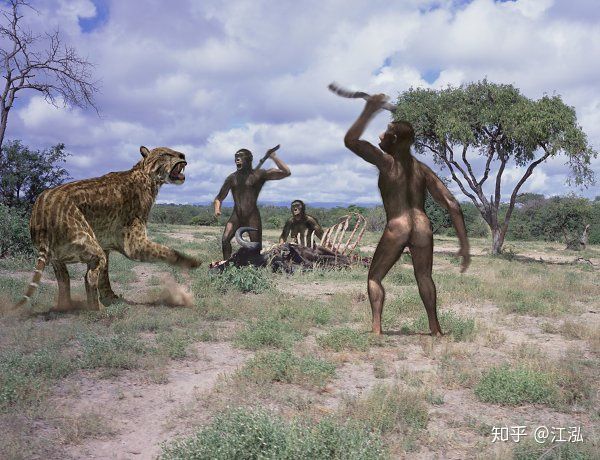
In fact, this research has surprised everyone by our far-fetched creatures who are very weak creatures and can easily become prey for Dinofelis - an excellent saber-toothed cat. strains. But in fact, this study has shown that our ancestors relied on the number of factors as well as the flexible hands that can wield a tool to force predators to abandon their loot. .
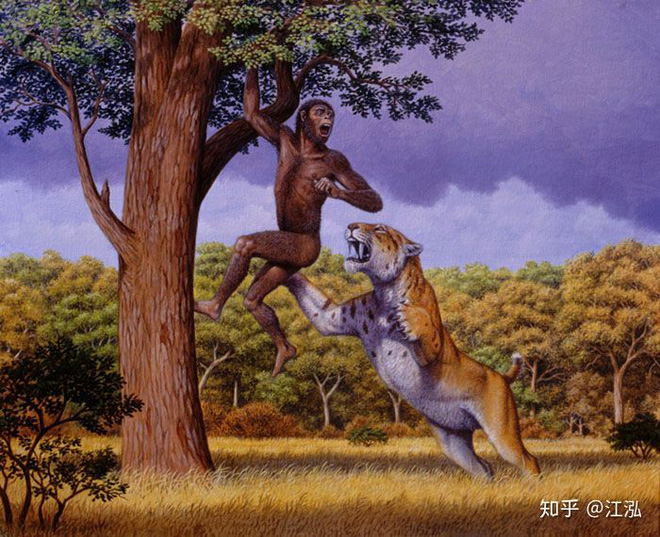
Human ancestors were easy prey for large mammals alone.
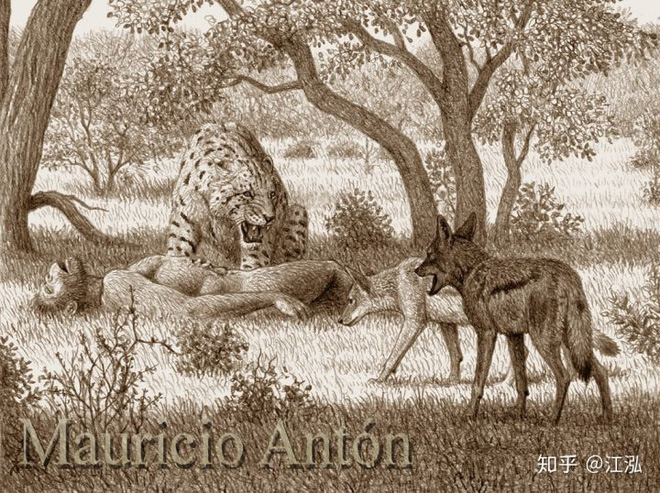
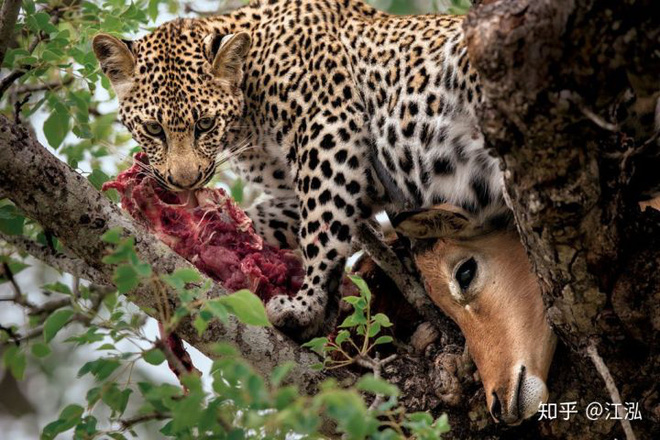
Because of the pressure of their prey that can be stolen or robbed, most large predators in Africa have developed the skills to protect their prey to survive and evolve. to this day. For example, we can see that jaguars will pull their prey onto trees to eat after successful hunting. Predators such as lions and hyenas protect their prey together in groups.
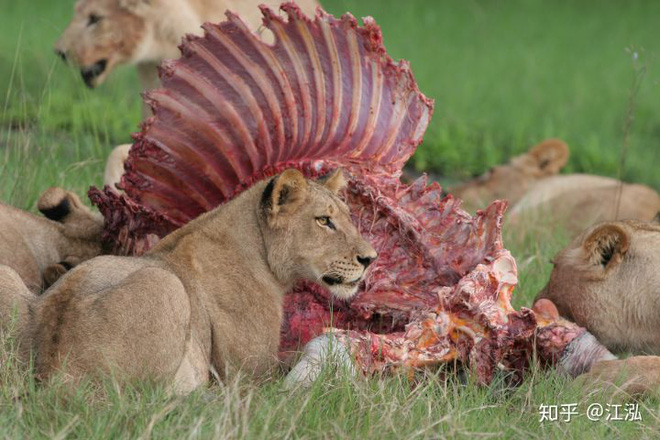
You should read it
- Climate change is causing the sea to flow faster, scientists are still confused about what the harm will be
- Acid in the Arctic Ocean increases rapidly with climate change
- Startled with the harmful effects of solar cells on the environment
- There are signs of ecological change due to climate change in the arid valley of Antarctica
- Robot Boys help measure the impact of climate change
- Scientists find the true cause of the giant animal extinction in Australia
- Prehistoric home builders living through the Ice Age from the bones of giant beasts became extinct?
- European scientists predict half of the current beach will disappear by the end of this century
May be interested
- The 6 largest meteorite blocks are detected on the surface of the Earth
 most of the meteorites that have fallen on our planet have been going on for a long time. until it was found by humans, it dates back thousands of years. thankfully, most of them are small rocks except for giant meteorites that have caused great extinction on earth 63 million years ago.
most of the meteorites that have fallen on our planet have been going on for a long time. until it was found by humans, it dates back thousands of years. thankfully, most of them are small rocks except for giant meteorites that have caused great extinction on earth 63 million years ago. - Going to herd cow, accidentally discovered fossil 'monster' 20,000 years old
 this species is considered to be the ancestor of modern apricot species, which evolved in south america 30 million years ago before extinction at the end of the canh tan ten thousand years ago.
this species is considered to be the ancestor of modern apricot species, which evolved in south america 30 million years ago before extinction at the end of the canh tan ten thousand years ago. - 5 mass extinctions that shaped the Earth and the 6th is happening now
 the dinosaur extinction was just one of five global events that wiped out millions of species. how did these events happen? and how can we prevent them from happening again?
the dinosaur extinction was just one of five global events that wiped out millions of species. how did these events happen? and how can we prevent them from happening again? - Scientists find the true cause of the giant animal extinction in Australia
 50000 years ago, the australian continent still had many different beasts, but they disappeared in a short period of time, leaving a mystery for humankind.
50000 years ago, the australian continent still had many different beasts, but they disappeared in a short period of time, leaving a mystery for humankind. - Exchanging fake iPhones for real iPhones for 10 consecutive years caused Apple to lose 12 million USD
 five chinese citizens living in the los angeles area exchanged fake iphones for real iphones 16,000 times over the course of 10 years, causing more than $12 million in damage to apple.
five chinese citizens living in the los angeles area exchanged fake iphones for real iphones 16,000 times over the course of 10 years, causing more than $12 million in damage to apple. - 17 signs that the 6th great extinction - the nightmare of humanity is about to sweep through the earth
 extinction is a marked decline in the abundance and diversity of large species (not microorganisms). this phenomenon occurs when the rate of extinction increases rapidly compared to the rate of species formation.
extinction is a marked decline in the abundance and diversity of large species (not microorganisms). this phenomenon occurs when the rate of extinction increases rapidly compared to the rate of species formation. - The familiar human foods that dogs eat and cannot eat
 dogs are extremely loyal animals and have always been associated with human life for thousands of years.
dogs are extremely loyal animals and have always been associated with human life for thousands of years. - Stephen Hawking warned: 'Humans have only 100 years left to leave Earth.'
 physicist stephen hawking warns: people need to settle on another planet in the next 100 years if not to face the danger of extinction.
physicist stephen hawking warns: people need to settle on another planet in the next 100 years if not to face the danger of extinction. - Infecting 50 million computers in 10 days, how the ILOVEYOU worm caused the world's first computer virus pandemic
 today, 20 years ago, iloveyou caused a global earthquake, no different from the current covid-19 pandemic.
today, 20 years ago, iloveyou caused a global earthquake, no different from the current covid-19 pandemic. - Review Second Extinction Early Access - Revenge Dinosaur
 second extinction is a co-op fps game that has a solid foundation for potential future development even though it's only in early access.
second extinction is a co-op fps game that has a solid foundation for potential future development even though it's only in early access.










 Series of mysterious stone statues made scientists theorize: Did humans live at the same time as dinosaurs?
Series of mysterious stone statues made scientists theorize: Did humans live at the same time as dinosaurs? Climate change is so severe that hibernating bears woke up 2 months early
Climate change is so severe that hibernating bears woke up 2 months early European scientists predict half of the current beach will disappear by the end of this century
European scientists predict half of the current beach will disappear by the end of this century Vibranium vs. Adamantium: In the Marvel universe, which metal is more valuable?
Vibranium vs. Adamantium: In the Marvel universe, which metal is more valuable? Police protect the planet: Light pay high, stable to doomsday, receive 200,000 USD / year from NASA
Police protect the planet: Light pay high, stable to doomsday, receive 200,000 USD / year from NASA 'Russia has no winter this year'
'Russia has no winter this year'